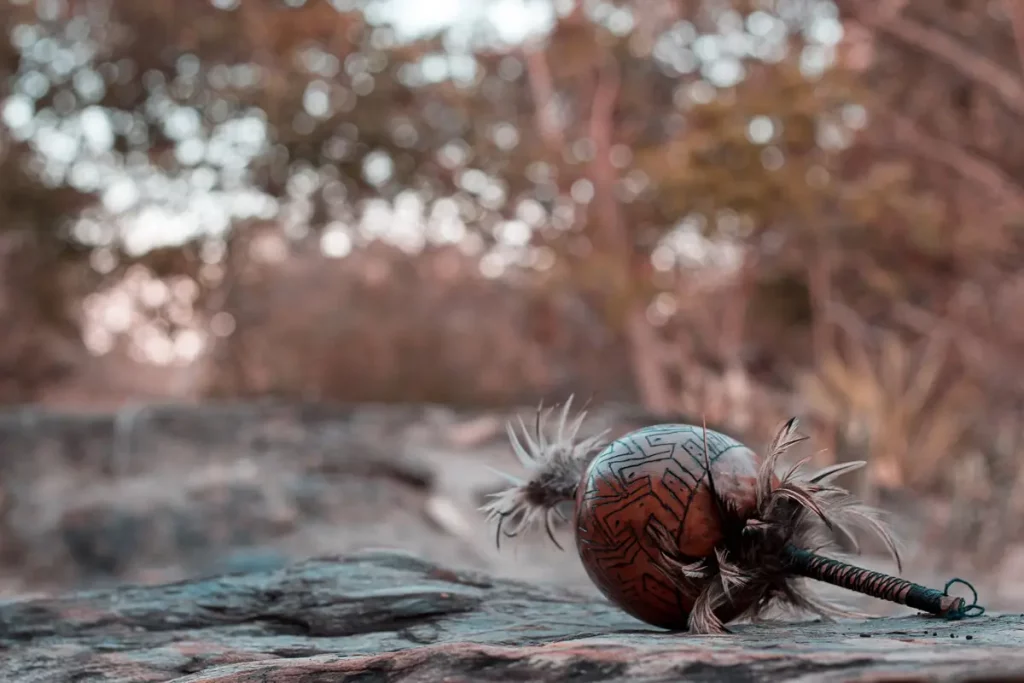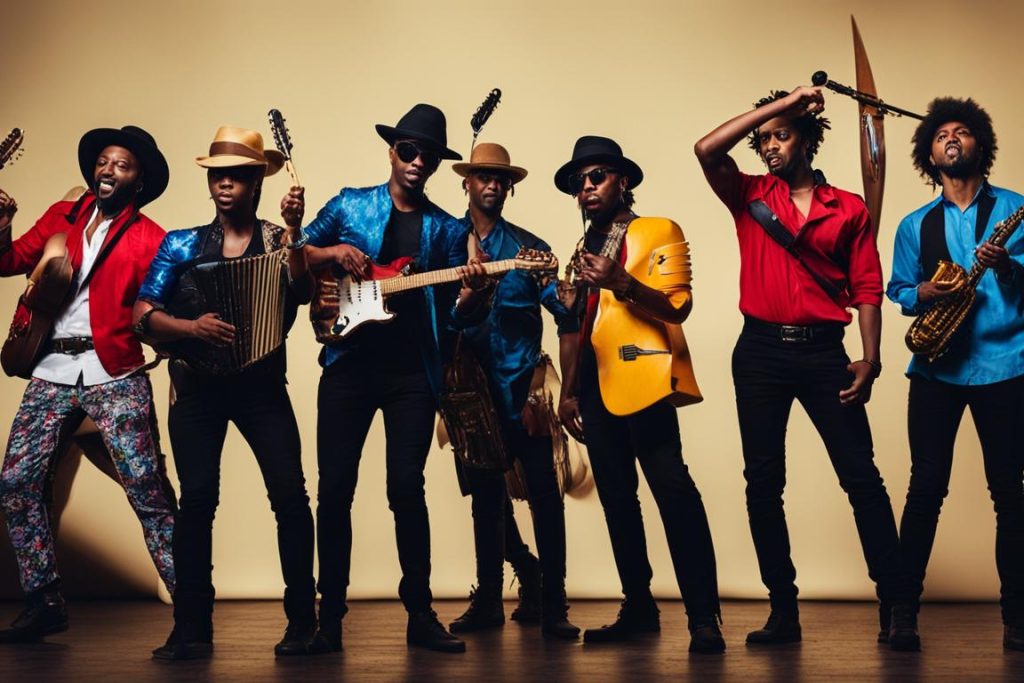Welcome to our article on the fascinating history of maracas musical instrument. If you’re curious about the origins and cultural significance of this iconic percussion instrument, you’ve come to the right place.
Maracas, also known as Rumba shakers, chac-chacs, and rattles, have a long and storied history that spans various regions and cultures around the world.
Discover the traditional roots of maracas and how they are played. Learn about the craftsmanship that goes into making these instruments.
Whether you’re a music enthusiast or simply interested in learning more about the cultural heritage of instruments, this article is sure to captivate your interest.

Content
Traditional Roots of Maracas
Maracas have a rich history rooted in the indigenous cultures of Latin America. These traditional instruments are believed to have originated from tribes such as the Arauca tribe in South America and the Taino tribe in Puerto Rico.
These indigenous communities used maracas for religious ceremonies and healing rituals, considering the sound of the maracas to possess spiritual and healing properties.
Maracas were crafted using natural materials found in their surroundings. Gourds and calabash fruits served as the main body of the instrument, which was then filled with seeds or pebbles to create the desired sound.
The craftsmanship and use of these materials showcase the resourcefulness and connection to nature that these indigenous cultures encompassed.
The indigenous peoples of Latin America believed that the rhythmic shaking of the maracas could invoke spiritual connections and promote healing within their communities.
The use of maracas was not solely for entertainment purposes but held deep cultural significance.
In modern times, maracas have gained global recognition, becoming a staple instrument in Latin music.
However, it is crucial to acknowledge and honor their true origin story and the communities that developed and cherished this instrument throughout history.
| Indigenous Tribe | Location | Maracas Materials |
|---|---|---|
| Arauca | South America | Gourds, seeds or pebbles |
| Taino | Puerto Rico | Calabash fruits, seeds or pebbles |
How Maracas are Played
Playing maracas is a fun and rhythmic experience that adds flair to various genres of music. To play maracas, you simply hold the handle and shake them.
Maracas belong to the category of shaken idiophones in the percussion family, producing sound through shaking rather than striking or rubbing.
This percussion instrument is usually played in pairs, with one maraca in each hand.
Maracas are versatile and can be found in a wide range of musical styles, including Cuban music, Afro-Puerto Rican music, orchestral music, and even rock and roll.
They serve as important rhythmic elements, keeping the beat and enhancing the overall sound of the music.
While it doesn’t take long to learn the basics of playing maracas, it takes practice to master the instrument and create different rhythms and sounds. Here are a few techniques for playing maracas:
- Shake with control: When shaking the maracas, it’s important to maintain control over the rhythm and volume. Start by shaking them gently and gradually increase the intensity as you become more comfortable.
- Create different sounds: Experiment with different shaking techniques to produce various sounds with the maracas. You can shake them softly, rapidly, or even in a circular motion to achieve different effects.
- Integrate into the music: Listen to the music and find ways to sync your maraca playing with the rhythm and melody. Pay attention to other instruments and the overall musical arrangement to ensure your maracas complement the music.
Remember, playing maracas is not only about creating sound but also about adding energy and excitement to the music. So, let loose and have fun with your maracas!
The Making of Maracas
Maracas, the beloved percussion instrument, have been crafted for generations using traditional methods. The process of making maracas involves skillful craftsmanship and attention to detail. Let’s explore how these iconic instruments are made and the materials used.
Traditional Maracas Making Process
In the traditional maracas-making process, gourds or calabash fruits are essential components. These natural materials provide the resonating chamber for the maracas, allowing the sound to resonate beautifully. To create the maracas, artisans start by removing the pulp from the gourd or fruit, leaving only the outer shell.
Next, holes are carefully made in the gourd or fruit to create openings for the filling. Pebbles, beads, or beans are then inserted into these holes.
The filling materials can vary, allowing for different sounds and tones to be produced. Some artisans add feathers or hair to the handles of the maracas, adding an artistic touch to the instrument.
Once the filling is in place, the gourd or fruit is fitted with a handle. The handle is securely attached to the resonating chamber, ensuring durability and longevity. This completes the traditional maracas-making process, resulting in a unique and authentic instrument.
While traditional maracas were made predominantly from gourds or calabash fruits, modern-day maracas can be crafted from a variety of materials.
Leather, wood, and even plastic are commonly used in the construction of modern maracas. This allows for greater flexibility in shaping and designing the instrument.
Cultural Significance of Maracas
Maracas hold immense cultural significance in Latin music and traditional ceremonies. They are deeply rooted in Latin American folkloric music and have come to symbolize the rich cultural heritage of the region.
With their vibrant sound and rhythmic qualities, maracas play a vital role in enhancing various genres of music, including salsa, son, guaracha, and bolero.
In traditional ceremonies, maracas are often used as instruments of spiritual connection and healing. Their rhythmic shaking is believed to invoke spiritual energies and create a harmonious ambiance.
The captivating sound and movement of maracas provide a powerful and symbolic experience, reinforcing the cultural beliefs and traditions of the Latin American communities.
Not only are maracas integral to traditional ceremonies, but they also play a significant role in festive gatherings and celebrations.
Whether it’s a lively dance performance or a joyful celebration, maracas add an extra element of excitement and rhythm, encouraging people to participate and revel in the cultural festivities.
The cultural significance of maracas goes beyond their musical contribution. They represent the vibrant and diverse Latin American culture, connecting people through music, dance, and celebration.
The rhythmic impact of maracas in Latin music holds a special place in the hearts of both musicians and audiences, allowing them to experience the essence of Latin American traditions and cultural heritage.
Notable Maraca Players
Throughout the history of Latin music, there have been famous maraca players who have mastered the instrument and become maraca masters. One such player is Frank “Machito” Grillo, renowned for his skill with the maracas.
He extensively incorporated the instrument into his music and contributed to the development of modern salsa and Latin jazz, influencing future generations of musicians.
A Closer Look at Frank “Machito” Grillo
Frank “Machito” Grillo, born in Havana, Cuba, in 1908, was one of the pioneers of Afro-Cuban jazz. He actively incorporated Afro-Caribbean rhythms into his music, combining the traditional sounds of maracas with brass instruments and percussion.
Machito formed the Afro-Cuban jazz orchestra “Machito and his Afro-Cubans,” which gained significant popularity in the 1940s.
The Influence of Frank “Machito” Grillo
Machito’s innovative use of the maracas and his fusion of Latin and jazz genres paved the way for future developments in Latin music.
His collaborations with influential jazz musicians such as Dizzy Gillespie and Charlie Parker blurred the boundaries between different musical styles and greatly expanded the reach of Latin music.
| Name | Nationality | Genre |
|---|---|---|
| Frank “Machito” Grillo | Cuban | Afro-Cuban jazz |
| Tito Puente | Puerto Rican | Mambo, Latin jazz |
| Armando Peraza | Cuban | Afro-Cuban jazz, rock |
| Willie Bobo | Puerto Rican | Latin jazz, boogaloo |
These notable maraca players, along with many others, have left a lasting impact on Latin music, proving the versatility and significance of the maracas as an essential rhythmic element.
Maracas in Contemporary Music

Maracas, with their unique sound and rhythmic qualities, has not been limited to traditional and folkloric music. They have also made their way into contemporary and popular music across various genres.
While they are most commonly associated with Latin music, their versatile nature allows them to seamlessly blend in and enhance the rhythm of songs from different cultures and musical styles.
Maracas add a distinctive flavor to contemporary music, creating a lively atmosphere and adding depth to the overall sound.
Their percussive nature and ability to produce a crisp, shaking sound make them a popular choice among musicians looking to incorporate additional layers of rhythm in their compositions.
For example, in Latin pop, maracas are often used to accentuate the beat and bring an infectious energy to the music.
They can be heard in songs by artists like Marc Anthony, Gloria Estefan, and Carlos Santana, who infuse their music with Latin rhythms and elements.
In addition to Latin music, maracas have found their place in other genres such as rock, folk, and world music. They have been utilized by bands like The Beach Boys, The Rolling Stones, and even contemporary folk artists like Mumford & Sons.
These musicians recognize the unique qualities of maracas and use them to create a distinctive sound that sets their music apart.
However, despite their presence in contemporary music, it is important to note that the mastery of maracas is still primarily found in traditional and folkloric music.
Musicians who specialize in these genres have honed their skills through years of practice and appreciation for the cultural significance and historical roots of the instrument.
| Genre | Examples of Contemporary Songs with Maracas |
|---|---|
| Latin Pop | Marc Anthony – “Vivir Mi Vida” Gloria Estefan – “Conga” Carlos Santana – “Smooth” |
| Rock | The Beach Boys – “Kokomo” The Rolling Stones – “Start Me Up” |
| Folk | Mumford & Sons – “Little Lion Man” Simon & Garfunkel – “Cecilia” |
Conclusion
The history of maracas musical instruments have been utilized for centuries in indigenous rituals and healing ceremonies, showcasing their deep cultural significance.
Maracas have become an iconic symbol of Latin music, enriching genres such as salsa, son, and guaracha with their vibrant and rhythmic sounds.
While maracas have also found their way into contemporary music across different genres, it is in traditional and folkloric music that their mastery truly shines.
Skilled musicians like Frank “Machito” Grillo have harnessed the power of maracas, contributing to the evolution of genres like salsa and Latin jazz.
Their expertise and dedication to the instrument have paved the way for future generations of maraca players.
